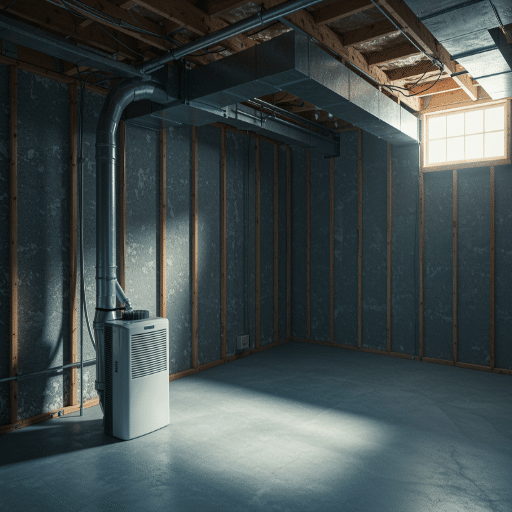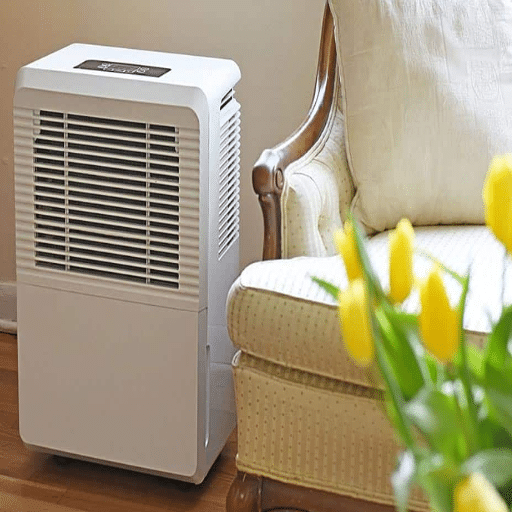A dehumidifier is a crucial appliance for maintaining a comfortable and healthy indoor environment, especially in spaces prone to high humidity. However, it can be frustrating when the system that’s supposed to remove excess moisture begins to malfunction—such as when ice builds up on the coils. If you’ve noticed this issue, you’re not alone. Frozen coils are one of the most common problems dehumidifier owners face, and understanding the root causes is key to solving it effectively.
This guide will walk you through the potential reasons for ice forming on your dehumidifier’s coils, including environmental factors, operational errors, and mechanical failures. We’ll also provide practical troubleshooting tips to help get your unit back to working as it should. By the end of this article, you’ll have a comprehensive understanding of why this issue occurs and what steps to take to address it, ensuring your dehumidifier performs at its best.
What causes a dehumidifier to ice up?

Several factors can cause a dehumidifier to ice up. One common reason is low ambient temperatures, as dehumidifiers are designed to operate best in warmer conditions. When the surrounding temperature drops below 65°F (18°C), the coils can freeze. Another cause might be restricted airflow due to clogged air filters or obstructions near the unit, preventing proper circulation. Mechanical issues, such as a faulty fan or low refrigerant levels, can also lead to ice buildup. Lastly, incorrect humidity settings or prolonged continuous use may strain the unit, resulting in icing on the coils.
Low room temperature and its effects
Low room temperatures can significantly impact air conditioning units, leading to inefficiencies and potential damage. When the surrounding temperature drops below the operational threshold, typically around 65°F (18°C), the refrigerant inside the unit may not evaporate properly. This can cause the coils to freeze, reducing the system’s ability to cool effectively and risking long-term damage to its components. Additionally, colder environments may cause lubricants in the system to thicken, impairing the movement of mechanical parts such as the compressor. Prolonged exposure to low temperatures combined with improper usage can exacerbate these issues, ultimately diminishing the overall performance and lifespan of the unit.
High humidity levels and freezing
Perhaps one of the greatest challenges that affects the performance of an air conditioning system, including when combined with sub-zero temperatures, is extremely high relative humidity. Humidity that exceeds certain limits can lead to excess vapor condensation on the cold surfaces within the system. This would cause moisture to be trapped within evaporator coils, which would decrease HVAC airflow, consequently requiring the system to work harder than usual to achieve the preset temperatures. These scenarios can further escalate to other problems such as reduced airflow and increased power consumption, and a damper on overall system efficiency, along with potential compressor damage. These issues can be circumvented through regular upkeep practices that involve, cleaning system filters, assessing refrigerant levels, and measuring system airflow.
Airflow issues leading to ice formation
Airflow issues leading to ice formation are often caused by dirty air filters, blocked vents, or failing blower motors. These problems hinder the circulation of air over the evaporator coils, causing the refrigerant to drop below freezing and ice to build up. To prevent these issues, consider the following steps:
- Clean or Replace Air Filters Regularly
Clogged filters restrict the airflow and should be cleaned or replaced monthly, depending on usage and manufacturer recommendations.
- Inspect and Clear Vents
Ensure that all supply and return vents are unblocked by furniture, debris, or other obstructions to maintain proper circulation.
- Check Blower Motor Functionality
A malfunctioning blower motor can significantly reduce airflow. Professional maintenance should address motor repairs promptly.
- Monitor Refrigerant Levels
Low refrigerant can exacerbate ice formation. It’s important to have an HVAC technician check and refill refrigerant levels as needed.
- Schedule Regular Maintenance
Routine inspections by a professional ensure that potential issues are identified early, reducing the likelihood of system inefficiencies and ice buildup.
By addressing these factors, you can maintain an efficient and reliable HVAC system while avoiding potential damages and costly repairs.
How can I prevent my dehumidifier from icing over?
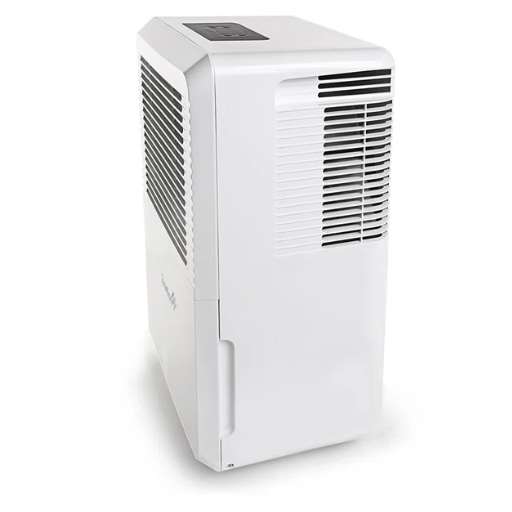
To prevent your dehumidifier from icing over, ensure that the room temperature is above the minimum operating range specified by the manufacturer, typically around 65°F (18°C). Regularly clean the air filter to maintain proper airflow and place the unit in an area with sufficient ventilation. Additionally, check for obstructions around the coils and remove any dust or debris that could restrict airflow. If icing persists, consider using a dehumidifier with an automatic defrost feature or consult a professional for further assistance.
Maintaining optimal room temperature
To maintain an ideal room temperature effectively, start by ensuring proper insulation to minimize heat exchange with the outdoors. Seal any gaps or cracks around windows and doors to prevent drafts. Use a programmable thermostat to automate temperature adjustments throughout the day, keeping your space comfortable while saving energy. Ceiling fans can help distribute air more evenly, improving overall efficiency. During warmer seasons, close blinds or curtains to block direct sunlight, while in colder months, allow sunlight to naturally warm your space. Regularly maintain your heating and cooling systems by cleaning filters and scheduling professional servicing to ensure efficient performance year-round.
Ensuring proper air circulation
Optimal airflow circulation within an enclosed space is critical as it contributes positively to a person’s well-being and comfort. In order to maintain comfort levels within an area, it is essential that all vents and registers are cleared of any blockage. Bathroom and kitchen exhaust fans should be operated to get rid of all offending and moisture-laden odors as they promote mold formation. The use of ceiling fans also assists in the even distribution of air within the room since ceiling fans cool and heat a room according to the direction the blades rotate. In order to improve the concentration of outdoor air pollutants, windows should be opened during off-peak hours for fresh air during the appropriate season. Blowers and fans can aid in air circulation, but air purifiers eliminate allergens and pollutants, which greatly improve overall air quality, especially when combined with clean or replace the HVAC filters. Indoor living spaces become enjoyable and healthy when inhaled contaminants are reduced and air circulation is smooth and consistent.
Regular cleaning and maintenance tips
To maintain a clean and healthy home, follow these essential tips:
- Establish a Cleaning Schedule: Regularly clean high-traffic areas, such as kitchens and bathrooms, to prevent the buildup of dirt and grime. Weekly vacuuming and dusting can also reduce allergens and improve air quality.
- Prioritize Surfaces and Touchpoints: Wipe down frequently touched surfaces, including doorknobs, light switches, and countertops, with disinfectant to minimize the spread of germs.
- Care for Floors and Carpets: Sweep or vacuum floors daily and mop hard surfaces weekly. Carpets should be deep cleaned or shampooed every 6 to 12 months to eliminate embedded dirt and allergens.
- Maintain Appliances: Clean appliances like refrigerators, ovens, and washing machines regularly to maximize their efficiency and lifespan. Clear lint traps in dryers after each use and descale coffee makers as needed.
- Hygienic Bedding Practices: Wash bedding, including sheets and pillowcases, weekly in warm water to remove sweat, oils, and dust mites. Consider vacuuming your mattress monthly.
- Air Quality Upkeep:
- Replace HVAC filters every 1–3 months, or as recommended by the manufacturer.
- Clean air vents and ducts to prevent dust accumulation.
- Check and maintain exhaust fans in kitchens and bathrooms to improve ventilation.
- Declutter Regularly: Organize and declutter your home to reduce dust collection and create a more inviting space.
By integrating these habits, you foster a cleaner, healthier living environment and prolong the life of your home’s essential features. Regular maintenance not only enhances comfort but also reduces costly repairs in the future.
What should I do if my dehumidifier is already frozen?
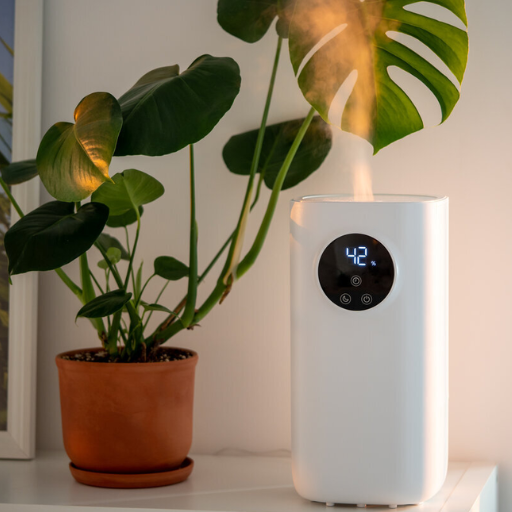
The first step in troubleshooting frozen dehumidifiers is removing ice, which can be done safely only if the dehumidifier is turned off. The environment must be taken into account as well, because dehumidifiers work best above 65° F (18° C). In addition, check to see if the air filter is dirty, because a clogged filter will not permit airflow. Moreover, check that an excess amount of dust does not accumulate on the coils of the dehumidifier. If the problem persists, the unit can be moved to a warmer location or professional help could be required.
Safe thawing procedures
To thaw your dehumidifier without causing any damage, you will first need to switch it off and unplug it. This will eliminate any possible electrical hazards. It is recommended to place the dehumidifier in a room with a stable temperature above 65°F (18°C) for natural thawing. Check the water reservoir and empty it to prevent overflowing. During the thawing process, be careful with sharp objects, as these may damage the coils.
After thawing, you should already be able to inspect the dehumidifier for basic issues like clogged air filters and dirty coils. These can be cleaned easily using a soft brush or a vacuum, as these will enhance the airflow. If the issue persists, relocate to a dryer or warmer place. Once there, ensure that the temperature is within the recommended range and that there is no humidity. If none of these solutions work, it is best to consult a professional, as the issue may be rooted in the mechanics of the dehumidifier.
Checking for damaged components
Initially, look for external damage such as cracks in the plastic casing, broken coils, or damaged power cords before checking the other features of the dehumidifier. Next, remember these fan blades and the compressor when checking the internal parts for any potential signs of wear and tear. Check the loops and connections with regard to the wires to ensure proper linkage and bolt fastening. If the dehumidifier is unable to remove moisture from an area, it is likely caused by a refrigerant leak or broken compressor. Replace damaged fan motors or control panels and consult the user guide as required. If you’re unable to self-fix the unit due to substantial damage, contacting a technician would be ideal to prevent further complications. When combined, repair work along with meticulous systemized derangement can greatly reduce expenditure and effort. In the long term, meticulous foresight can safeguard delicate components from sustaining irreparable damage.
When to seek professional help
You should seek professional help when your dehumidifier exhibits signs of severe damage or malfunctions that are beyond basic troubleshooting. Common issues that require expert attention include a non-functioning compressor, persistent refrigerant leaks, electrical failures, or if the unit fails to operate despite checking all standard components. Additionally, if you lack the necessary tools or expertise, hiring a professional can prevent further damage and ensure your unit is repaired safely and effectively. Regular servicing by qualified technicians can also prolong the lifespan of your dehumidifier and optimize its performance.
How does the defrost function work in dehumidifiers?
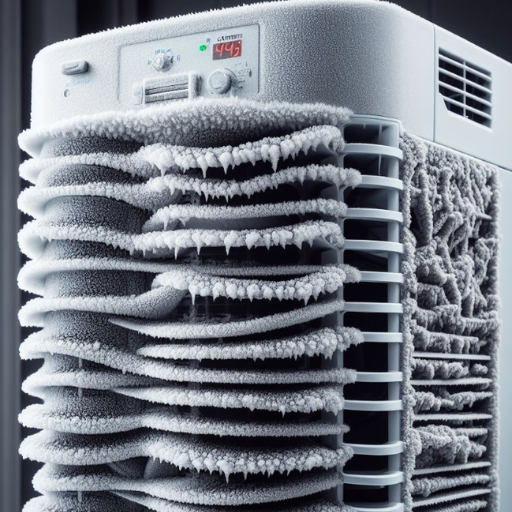
In refrigerant dehumidifiers, the defrost function is incorporated to remove frost build-up on the unit’s coils when operating at low-temperature settings. A surrounding temperature too low will cause moisture to freeze instead of draining away, which renders the dehumidifier ineffective. To cope, the defrost mode disables the compressor but keeps the fan running. The lift in temperature from the airflow helps remove frost build up on the coils, further enabling more effective functioning of the unit. The unit goes back to normal function once it has defrosted all ice build-up, thus using less energy and avoiding damaging the unit.
Understanding the defrost cycle
The defrost cycle in dehumidifiers is essential for maintaining their functionality in colder environments. During operation, if the surrounding temperature drops significantly, the moisture in the air can freeze on the unit’s coils, reducing efficiency and risking damage. The defrost cycle activates automatically to resolve this issue. It typically works by pausing the compressor while the fan continues to run, circulating air to warm the coils and melt any frost. Some advanced models may utilize heating elements to accelerate the process. By efficiently clearing ice buildup, the defrost cycle ensures the dehumidifier operates effectively, prolonging its lifespan and reducing energy usage.
Troubleshooting defrost sensor problems
When troubleshooting defrost sensor problems in a dehumidifier, it is important to first identify common signs of malfunction, such as the unit frequently entering the defrost cycle or failing to defrost properly. Begin by inspecting the sensor for physical damage or loose connections, as faulty wiring can disrupt accurate temperature detection. Clean the sensor area to ensure dust or debris is not causing inaccurate readings. If the sensor appears intact and clean but issues persist, use a multimeter to test for continuity. A defrost sensor that fails this test may need replacement. Always consult the user manual or a professional technician if unsure, and ensure the power supply is disconnected before performing any maintenance for safety.
What role do filters play in preventing dehumidifier icing?
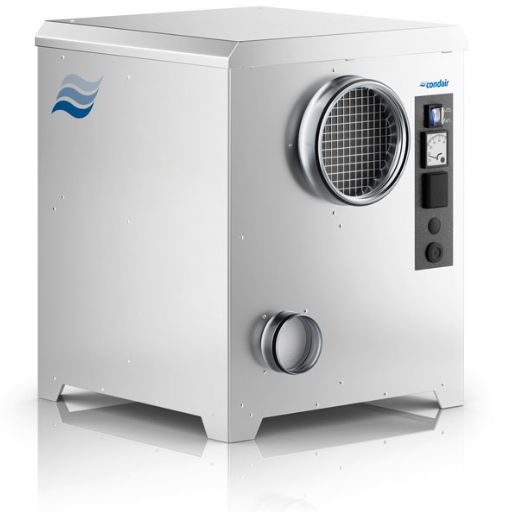
Filters play a crucial role in preventing dehumidifier icing by ensuring proper airflow through the unit. When filters become clogged with dust or debris, airflow is restricted, which can cause the evaporator coils to cool excessively and lead to ice formation. Regularly cleaning or replacing filters helps maintain optimal airflow, ensuring the dehumidifier operates efficiently and reduces the risk of icing. Proper filter maintenance is an essential step in prolonging the lifespan of the device and preventing unnecessary malfunctions.
Importance of clean air filters
Clean air filters are essential for maintaining the efficiency and performance of a dehumidifier. They ensure unrestricted airflow, which helps the unit regulate temperature and humidity effectively. Dirty or clogged filters force the dehumidifier to work harder, reducing its efficiency and potentially leading to issues like icing on the evaporator coils. Furthermore, clean filters promote better air quality by trapping dust, allergens, and other contaminants, creating a healthier indoor environment. Regularly inspecting and either cleaning or replacing air filters every one to three months, depending on usage and manufacturer guidelines, minimizes wear and tear, enhances energy efficiency, and extends the lifespan of the dehumidifier.
How to properly maintain and replace filters
To properly maintain and replace filters in your dehumidifier, start by consulting your manufacturer’s manual for specific instructions, as filter types and maintenance protocols vary by model. Generally, for washable filters, turn off and unplug the unit, remove the filter, and rinse it gently under lukewarm water. Allow the filter to air dry completely before reinserting it into the dehumidifier. For non-washable or disposable filters, remove the old filter and replace it with a new one, ensuring it is securely installed.
It’s recommended to inspect your filter every one to three months, depending on the frequency of use and environmental conditions. Homes with pets, high humidity, or heavy dust accumulation may require more frequent maintenance. Proper care not only optimizes the performance of your dehumidifier but also ensures cleaner air circulation and extends the life of the device.
When should I consider replacing my icing dehumidifier?
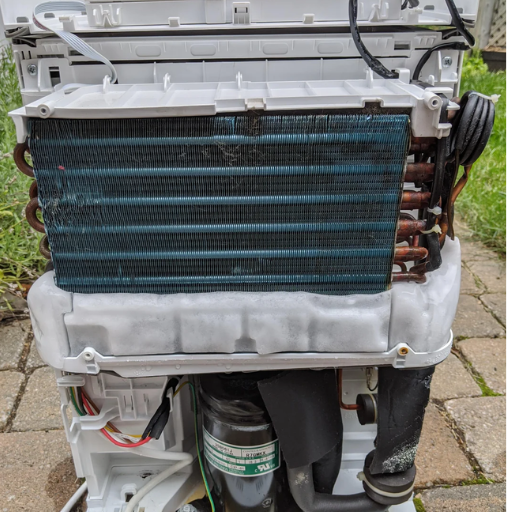
You should consider replacing your icing dehumidifier when it shows persistent signs of reduced performance despite regular maintenance. Indicators include excessive ice buildup, failure to reach desired humidity levels, strange noises, or frequent operational issues such as leaking. Additionally, if the cost of repair approaches the price of a new unit, or if the model is outdated and inefficient compared to newer technologies, it might be time to upgrade. Always evaluate the unit’s efficiency and compare it with your current needs to make an informed decision.
Signs of irreparable damage
Irreparable damage to an icing dehumidifier is often indicated by a combination of severe issues. Persistent ice buildup that cannot be resolved through defrosting or maintenance is a major warning sign. Additionally, if the unit frequently leaks water, fails to turn on, or emits burnt smells or unusual noises despite troubleshooting, it could suggest internal electrical or mechanical failure. A significant drop in performance, such as no noticeable effect on room humidity levels, may also point to irreparable faults. Lastly, if repairs require hard-to-find parts or carry costs close to or exceeding a replacement, it is generally more practical to invest in a new, energy-efficient model.
Cost-benefit analysis of repair vs. replacement
When evaluating whether to repair or replace an icing dehumidifier, several key factors should be considered. Start by assessing the age of the unit—dehumidifiers older than 5-10 years often lack the energy efficiency and reliability of newer models, increasing operational costs. Next, examine the cost of repairs versus the cost of a new unit. Repairs that exceed 50% of the price of a replacement are generally not cost-effective, especially if the unit is no longer under warranty. Energy efficiency also plays a crucial role, as modern dehumidifiers often offer significant savings on utility bills due to improved design and technology. Additionally, factor in the availability of replacement parts; if parts are scarce or expensive, replacing the unit becomes a more practical choice. Ultimately, weigh the long-term savings and performance improvements of a new dehumidifier against the short-term financial outlay to determine the most economical and practical solution.
References
Frequently Asked Questions (FAQ)
Q: Why is my dehumidifier freezing up?
A: A dehumidifier freezing up can be caused by several factors including low temperatures (below 65 degrees Fahrenheit), restricted air flow due to dirty filters or blocked grills, or a malfunctioning dehumidifier fan motor. It’s important to inspect the coils and ensure the dehumidifier is operating in an environment above 65 degrees.
Q: How can I fix this problem of ice on the dehumidifier coils?
A: To fix this problem, first turn the unit off and let it thaw for 5-10 minutes. Check for any obstructions to air flow, clean the filters, and inspect the condenser coils for dirt. Ensure the ambient temperature is above 65 degrees Fahrenheit.
Q: What role does the fan motor play in preventing frost on the coils?
A: The dehumidifier fan motor is crucial for maintaining air flow across the cooling coils. If the fan motor is defective or the blower wheel and fan blade are not spinning freely, this can lead to inadequate air circulation and cause frost to form on the coils.
Q: Can low refrigerant levels cause my dehumidifier to freeze?
A: Yes, being low on refrigerant can cause the dehumidifier coils to freeze. This is because insufficient refrigerant prevents proper heat exchange, which can lead to ice formation. It may require a professional technician to check and refill the refrigerant.
Q: Is my Danby dehumidifier more prone to freezing?
A: Danby dehumidifiers, like other dehumidifier models, can experience freezing if used in low temperatures, have restricted air flow, or if the dehumidifier fan motor is not functioning properly. Regular maintenance and ensuring proper operating conditions can prevent this issue.
Q: What should I do if the dehumidifier fan motor is not spinning?
A: If the dehumidifier fan motor is not spinning, check for any obstructions around the fan blade or blower wheel. Ensure that the motor spins freely and is not defective. If the problem persists, the fan motor may need to be replaced.
Q: How can I improve the air flow in my dehumidifier?
A: To improve air flow, regularly clean the air filter, inspect the grille and remove any blockages, and ensure the blower wheel and fan blade are functioning properly. Good air circulation is essential to prevent the dehumidifier from freezing.
Q: What temperature should I maintain to avoid my dehumidifier freezing up?
A: You should maintain the room temperature above 65 degrees Fahrenheit to prevent the dehumidifier from freezing. At temperatures below this, the cooling coils are more likely to freeze over.
Q: Do I need to replace any parts if my dehumidifier keeps freezing?
A: If cleaning and proper maintenance do not resolve the issue, certain repair parts may need to be replaced. This could include the dehumidifier fan motor, blower wheel, or other components that affect air flow and dehumidification. Consult a professional if you’re unsure.

